Our Verdict
There's still work to be done on the game at large, but The Witch Queen is a massive step in the right direction. The campaign alone is worth the price of admission.
PC Gamer's got your back
What is it? The fourth expansion for Destiny 2.
Expect to pay $40/$35
Release date Feb 22, 2022
Developer Bungie
Publisher Bungie
Review on Ryzen 7 3700X, 32GB RAM, RTX 3080Ti
Multiplayer? Extensively
Since its release, Destiny 2 has been cursed to reinvent itself with each expansion—always building towards the hope of a better, more sustainable future. Starting with Forsaken, and through to 2020's Beyond Light, Bungie has overhauled every aspect of the game multiple times—weapons, armour, abilities, activities—each solving some issues, but introducing new problems that inevitably led to the cycle repeating. No matter what changes were made, Destiny 2 always felt a few major tweaks away from being truly brilliant.
If The Witch Queen does one thing right—and, in fact, it does many—it's that it brings a sense of consistency and stability to the game. It adds new features, yes, but they're all enhancements and progressions of systems and ideas introduced in Beyond Light. That rare sense of continuity allows The Witch Queen to instead stand out in a more meaningful way: by being Destiny 2's best expansion. Finally, that future is here.

The centrepiece is the campaign, which for the first time in Destiny 2's history is itself a compelling reason to recommend this expansion. Previously, Destiny 2 campaigns were little more than a path into the endgame—a handful of short missions, linked by rigidly templated repeatable activities and open-world busywork. Here, though, it feels like the main attraction.
Each of its eight lengthy missions is full of personality, progressing the story through a series of standout encounters and the occasional surprise. It starts as you assault a Cabal base on Mars—recently returned after being, err, borrowed by the Darkness—in order to fire yourself out of a cannon onto the titular Witch Queen's ship. From there, you discover a portal into her Throne World, a sort of spooky alternate dimension made into a physical manifestation of its owner's personality.
What does the Throne World of the Hive god of cunning look like? Swamps, mostly, that border an enormous ivory castle. We've seen Hive architecture plenty before, and while the broad motifs are all still in place, Savathûn's ostentatious taste ensures it doesn't feel like you're retreading old ground. The aesthetic ties into the story, too. Pretty soon after arriving you find that Savathûn now possesses the Light—the same space magic responsible for most of your powers. Discovering how this happened is the driving motivation of the campaign.
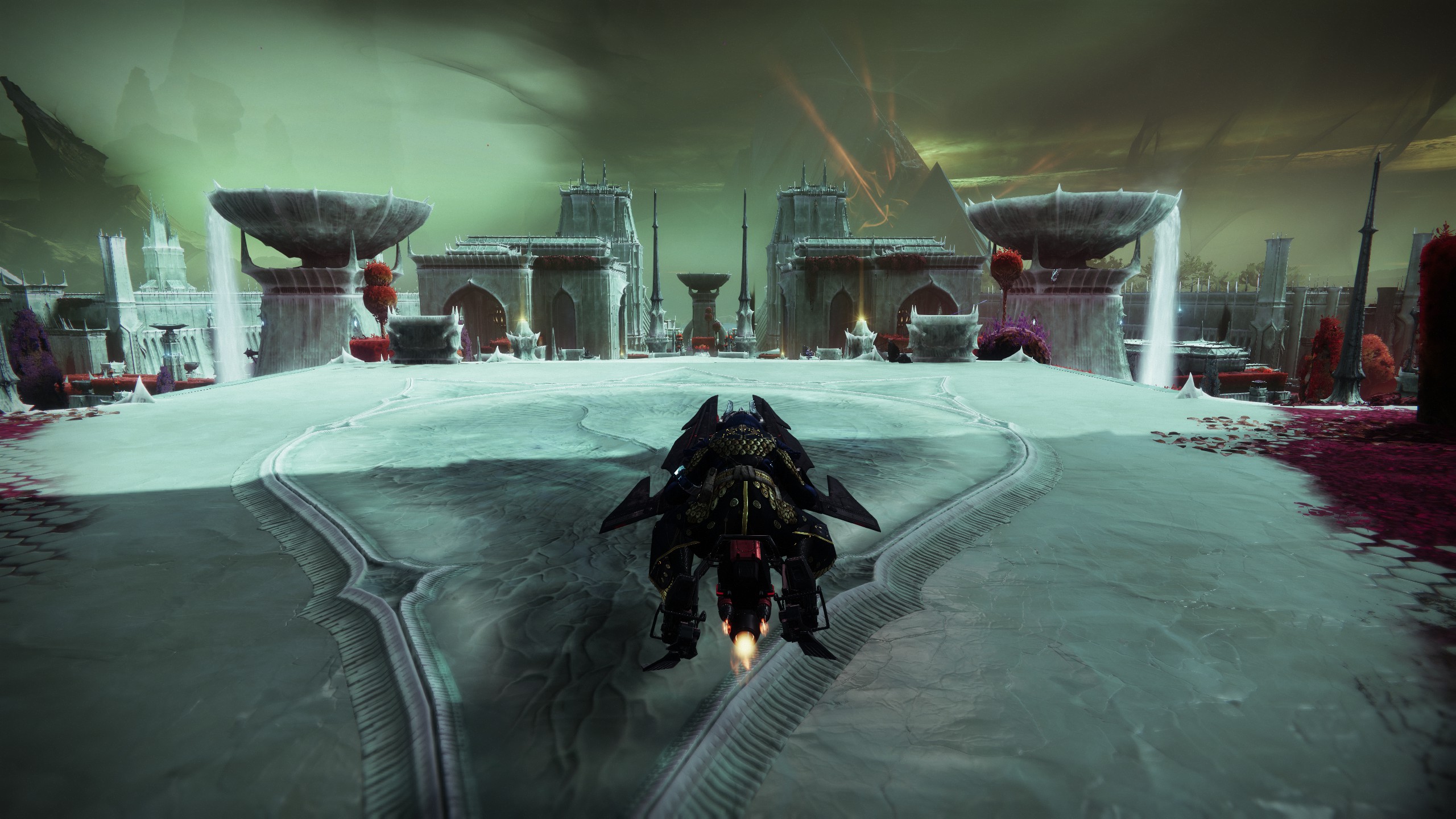
I love that it's not afraid to be weird. Destiny's lore has always been batshit, but you wouldn't necessarily know it from playing the game. Now, though, it feels like Bungie is embracing its more outlandish sci-fi concepts, putting them front and centre as they build towards the final confrontation between Light and Dark.
Hive mind
As a result, I suspect it will be baffling to new players. Destiny 2's new player experience is already pretty bad—in part a result of Bungie's decision to remove older campaigns. The quest system works when you've got history with the game, but it does a poor job of pointing you at what you should be doing and why. The Witch Queen does little to solve this problem. While the campaign does a decent job of highlighting key mechanics, there's no clean way into its story or the overarching rhythm of its endgame. My advice? Read the Books of Sorrow, jump in, and accept that at a certain point you're just along for the ride.
As a longtime player, I'm used to feeling let down by the delivery of Destiny's story. Shadowkeep was a couple of cool moments bookending a mess of rituals and macguffins. Beyond Light introduced and dispatched its main antagonist with little fanfare, and rushed through major beats with little chance to stop and consider what they meant. But here, the work spent making Savathûn feel like a threat over the last year-and-a-bit of seasonal stories has really paid off, and the twists along the way feel appropriately big and dramatic. Finally, Bungie is making good use of the fact Lance Reddick voices one of the game's main characters.

The gunplay is great too, of course. That's always been one of Destiny 2's great strengths, and the campaign's encounter design capitalises on it well. I've heard that, on normal difficulty, The Witch Queen's campaign is no pushover. But I played on Legendary—a new difficulty mode that hard caps your power level below the mission requirement, and adds new modifiers and challenge elements. It feels well tuned for anyone with a decently filled Vault and a working knowledge of armour mods. Plenty of harder encounters forced me to engage with Destiny 2's buildcrafting in a way that's rarely the case outside of the hardest endgame activities. It gives the complexity of the many ability systems, weapon perks and mods a chance to shine.
The Legendary campaign is a promising sign about Bungie's current thinking about difficulty.
There's also some added tactical complexity thanks to the new enemy type, the Lucent Hive. These Light-wielding minibosses are armed with variations of your own powers, making them incredibly deadly. But you can't just take them out: they'll respawn after they're killed unless you perform a melee finisher on their Ghosts. That creates varied range considerations, and forces you to clear any surrounding, lesser enemies, leaving the big, deadly target until you can be sure you can safely secure the kill.
More than just a fun challenge, the Legendary campaign is a promising sign about Bungie's current thinking about difficulty. It's the missing piece of a game that, until now, has oscillated between brainless shooting—fun enough in its own right—and cooperative endgame activities that force optimising loadouts across an entire fireteam. The Legendary campaign doesn't feature the Match Game modifier, which makes shields resistant to non-matching elemental weapons. Nor does it use Champions, which require specific seasonal mods to stun. Instead, you've got incredible freedom in the construction of your loadout, even if you're tackling its missions solo.
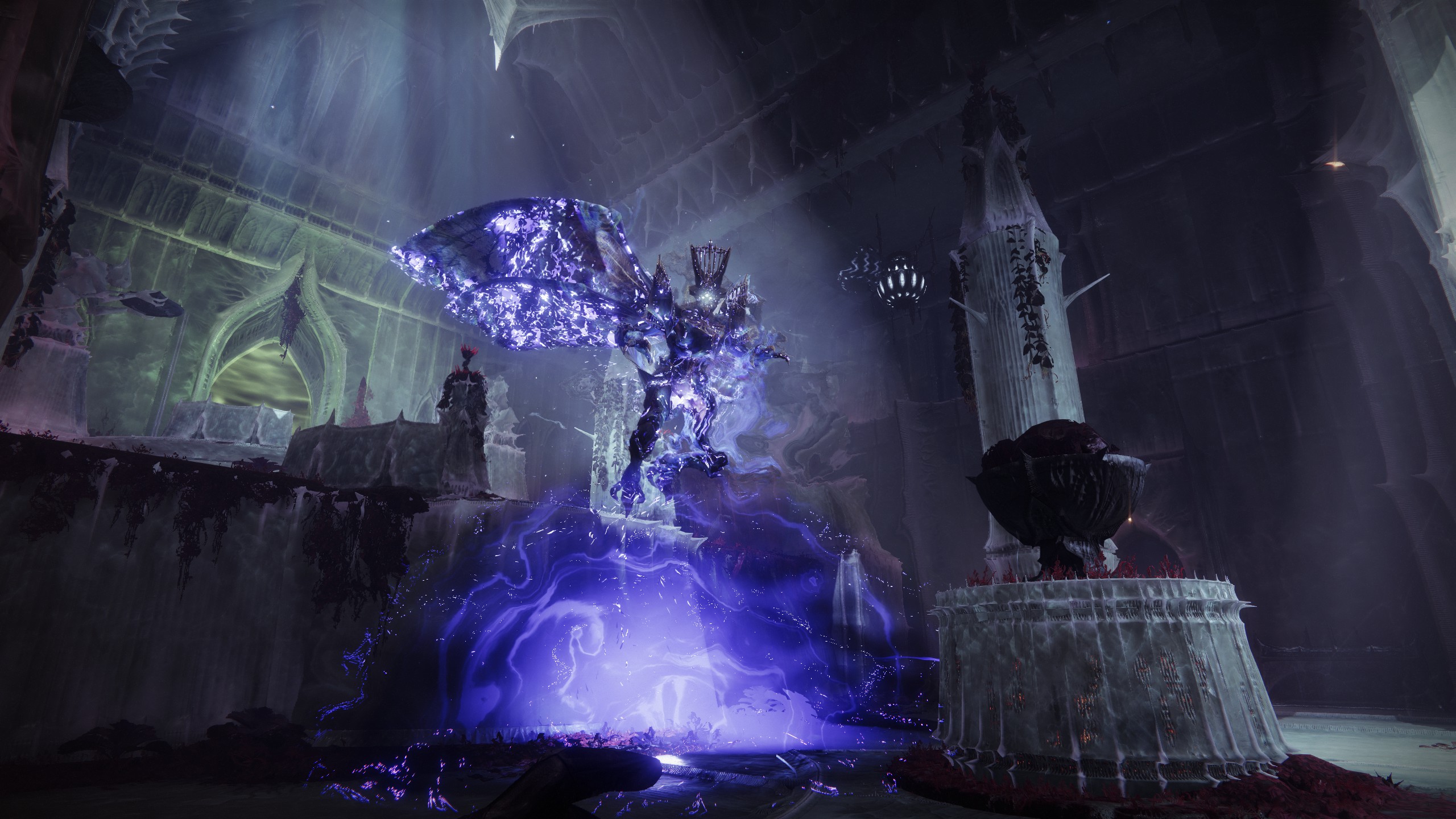
Inevitably my run through the Legendary campaign ended in me heavily investing in the new Void 3.0 subclasses. Rather than a completely new system, this is a rework of Void ability trees to match last year's Stasis abilities, using Aspects and Fragments to create heavily customisable builds around a handful of Void-specific keywords. As a Warlock main, my main keyword is Devour, which regenerates health on kills. It always came in clutch, but now it's more than just an isolated effect. I can choose how heavily to invest in each keyword through passive Fragment bonuses, mods, Exotic armour and even weapon choice.
Into the Void
There are three main downsides to this system right now, all of which speak to how good it is. The first, simply, is that it currently leaves an imbalance in the Light subclasses. Void is, for now, outright better than Arc or Solar, although that will be addressed as each gets its own 3.0 rework in future seasons across the coming year. The second is that, by tying the system into clear keywords, Void 3.0 is arguably better telegraphed and more customisable than the Stasis system that inspired it—suggesting last year's addition might need its own refresh to be brought up to spec. The third is that it highlights how increasingly absurd it is that Destiny 2 has no in-game system for saving loadouts. As buildcrafting continues to be pushed into more complex and customisable directions, the use of third-party sites like DIM—which utilise the Destiny 2 API to let you create and equip builds—has become mandatory.
When the campaign is over, Destiny 2 shifts back into its comfortable rhythm of chasing loot through repeatable activities, interspersed with the occasional Exotic quest. As a destination, the Throne World is fun to dig through, although I'm disappointed that—outside of a couple of activities and secrets—Savathûn's status as the god of cunning means little more than pressing F on a big orb to reveal some hidden platforms. The new location vendor, Fynch, has his own reputation system that builds when completing tasks in the open world itself, or via new instanced activities like Wellspring. That gives you plenty of reasons to revisit, sure, but I still don't think Bungie makes the most out of its destinations in general. This came into sharp focus when some friends and I took one last trip to the Tangled Shore before its removal with The Witch Queen's launch. Another cool space that, outside of bounties and busywork, I haven't had reason to explore for years.

I also don't love that Bungie has hidden Pinnacle activities—needed to reach the highest level cap—behind Fynch's reputation system. You need Throne World ranks in order to access the weekly campaign challenge and the Master difficulty version of Wellspring, as well as the Pinnacle Engrams they reward. Given that the clock is already ticking to hit the Pinnacle cap in time for Iron Banner, Trials and next month's launch of this season's Grandmaster Nightfalls, it necessitates grind for a system that should be doling out rewards steadily across the year.
Any season that offers a wave-frame grenade launcher is OK by me.
That Destiny's rhythm now is so comfortable is no bad thing. Again: this is a game that, until now, seemed obsessed with continually remaking itself. But with last year's Season of the Chosen, Bungie finally hit upon a seasonal model that seemed to work. And so this year the same template returns, unchanged. This year's seasons will again be placed in the Helm, and again offer a weekly storyline tied to a new activity, with upgrades that you unlock each week to further improve rewards.
With the format set, how good any individual season is mostly comes down to two factors: the activity it adds, and the loot you can earn. Based on those criteria, Season of the Risen, which launched alongside The Witch Queen, falls on the better end of the spectrum. The Psi-Ops Battlegrounds playlist is… fine. Acceptable. It warps familiar locations to incorporate Savathûn's favoured aesthetic, which is cool, but it's overly familiar in terms of pace and objectives. But it gets a pass because the guns are good. Any season that offers a wave-frame grenade launcher is OK by me.

In fact, I've already got a pretty sizable wishlist of guns to earn throughout the game. It's clear Bungie took to heart the complaints about Beyond Light's disappointingly small arsenal, because The Witch Queen adds plenty of new guns throughout. They're desirable, too, because the new Origin Traits give them an extra benefit based on their source. None of these perks feel particularly overpowered—so far I don't feel like I'm missing out if I use one of my older weapons. But I'm more likely to chase the new seasonal weapons because they all come with Land Tank, which gives increased damage resistance on kills.
Perking up
There are a few systems that aim to make earning a specific piece of loot less painful, to varying degrees of success. Bungie is continuing to overhaul vendors, letting you focus the rewards you earn into a random roll of a specific gun. This season it's Drifter that gets the upgrade. As with the Void rework, this results in a slightly awkward imbalance where a specific Gambit gun is easier to acquire than, say, one from the Vanguard playlist. But that's the upshot of not reinventing the game each year. Instead Destiny 2 has entered the era of rolling, steady improvement. Zavala will get his turn in a future season.
The more deterministic path is the new crafting bench, which finally gives players a route to the exact roll they want—albeit a slow one that doesn't entirely dispense with RNG. Before you can craft a gun, you first need to unlock its pattern by randomly acquiring Deepsight versions of that weapon. Get kills or complete activities while the weapon is equipped and you can extract its materials, and earn progress towards unlocking the pattern. How many extractions a pattern requires depends on its source: raid weapons need five, which means you need to acquire five Deepsight versions of that gun—a random chance on an already random drop.
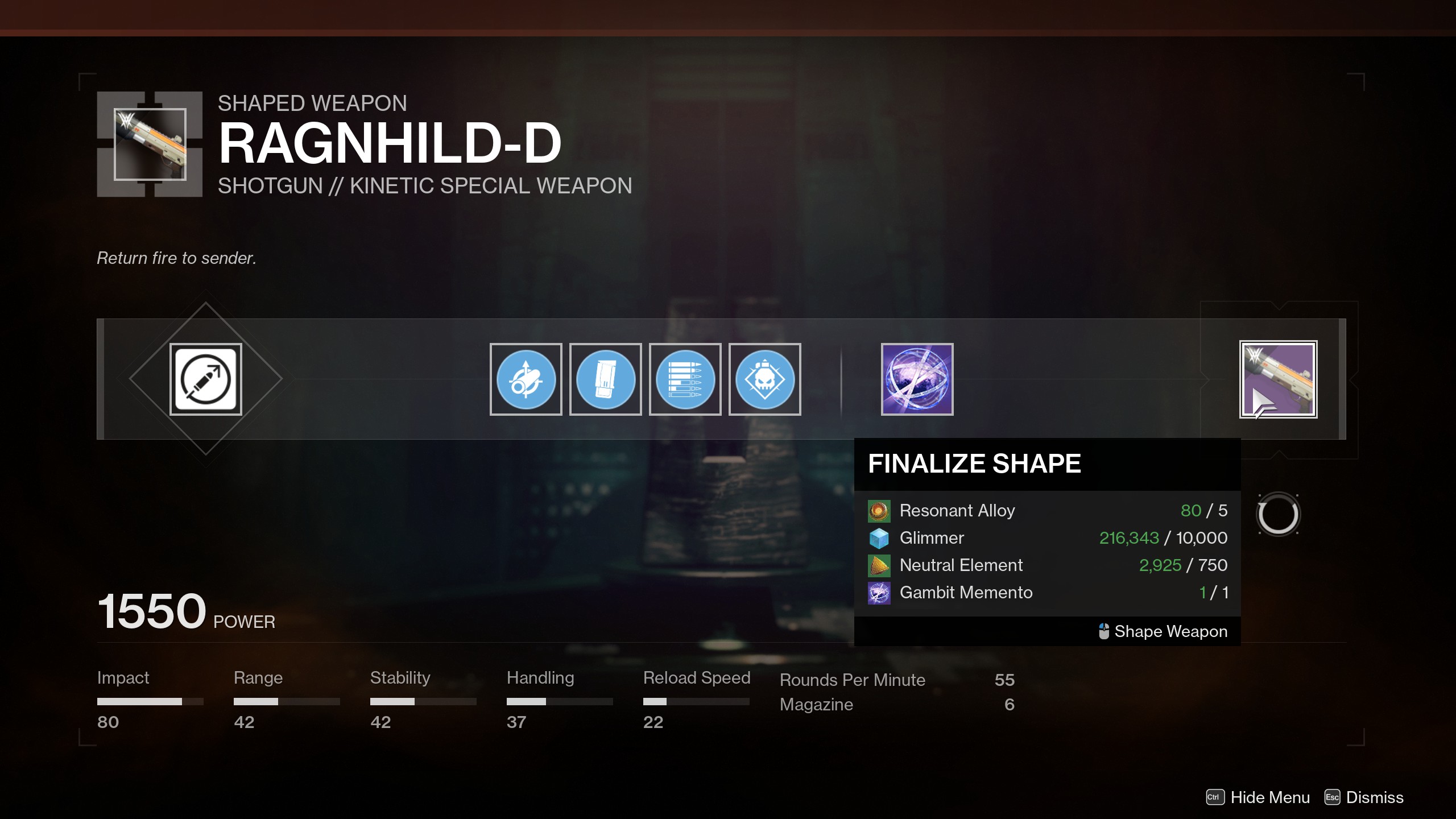
And that's only to unlock the ability to craft the most basic version. Once crafted, you need to level it up through kills and activity completions. The higher its levels, the more of its perk pool you unlock. The result is a significant time commitment before you can equip the best perks for your crafted gun of choice—to say nothing of the resource cost of equipping and changing those perks.
Whatever the crafting system's limitations, it is far better than what we had before, which was nothing.
There's already been plenty of discussion about the tuning of this system—the drop rates for Deepsight weapons, and the cost of equipping enhanced perks. It's a system that will likely need plenty of revision and tuning before it's done. Based on the reaction, it seems to be a major source of frustration for many, and Bungie has already tweaked the drop-rate of guns from the Wellspring activity to account for how rare their Deepsight variants were.
Here's the crucial thing, though: whatever the crafting system's limitations, it is far better than what we had before, which was nothing. Given how the system is currently tuned, it's unlikely that I will craft god roll versions of every weapon it supports. But I also don't think that was the point. Using sidearms makes me sad, so there's no reason for me to ever craft one. Using the new seasonal bow—Under Your Skin—makes me happy, and the crafting system now gives me a guaranteed route to the roll that I want.
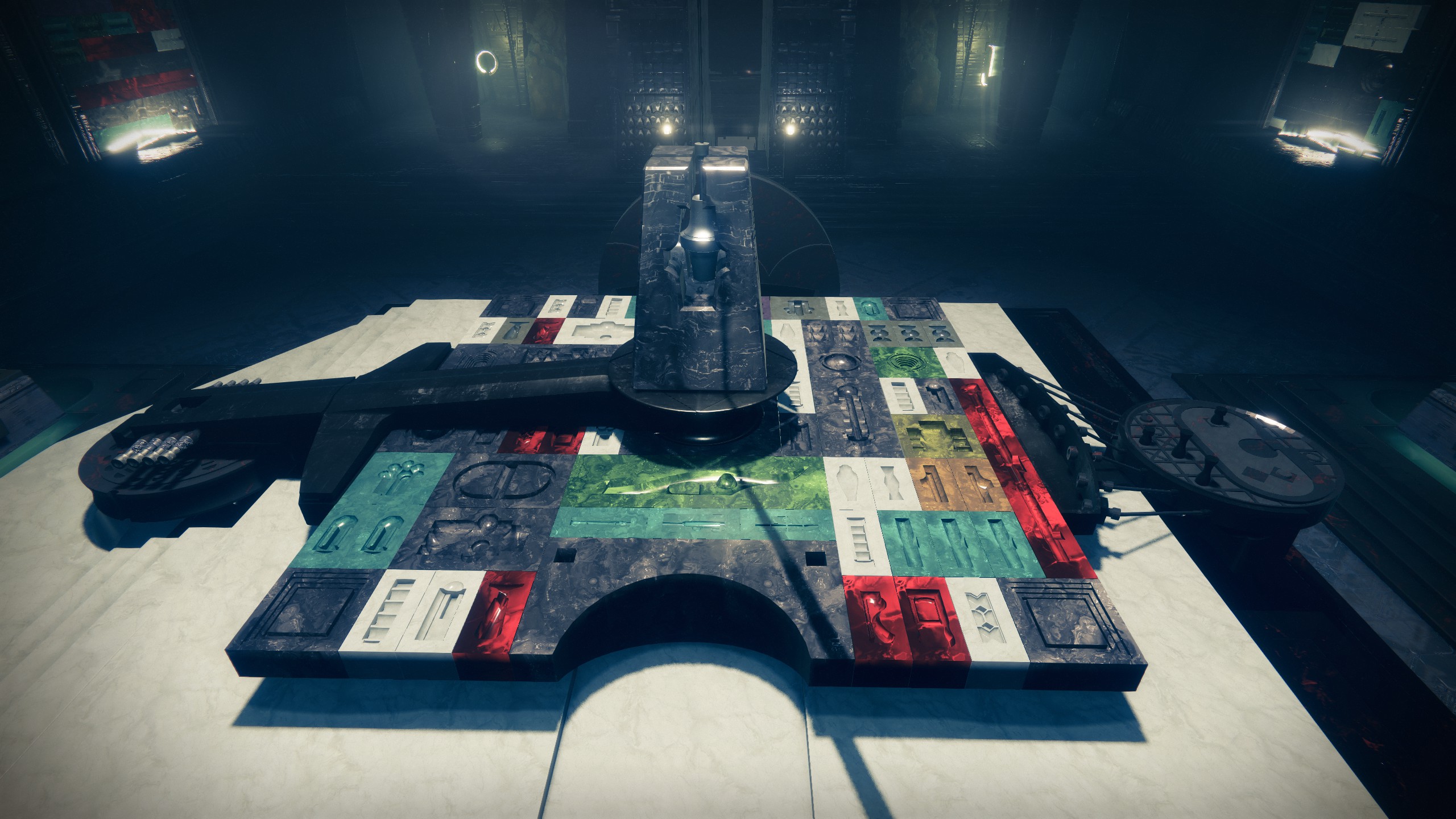
Of course, I could also just randomly earn that roll, at which point I'll likely concentrate my crafting efforts on something else instead. Especially as crafted guns can't earn the attractive golden border of regular masterworked weapons, thus making the entire system unusable. (I'm joking. Mostly.)
The weirdest thing about the crafting system is that, currently, it's incomplete. The new guns of the world loot pool—those found as random drops while you play—aren't included, nor are the core activity playlist weapons from Gambit, Crucible and Strikes. This feels like a misstep given that these are already by far the hardest to consistently farm. Bungie has said that more weapons will be added to the crafting system in the future, so hopefully they'll make an appearance soon.
State of play
As smitten as I am with the new additions, Destiny 2 remains a work-in-progress. There's always something that could stand to be improved. I said it when Beyond Light launched, and I'll say it again now: the core playlists are in desperate need of attention. The Witch Queen adds two new Strikes to the Vanguard playlist, as well as Battlegrounds from last year's Season of the Chosen. That's a step in the right direction, but there's still every chance that I'll launch the playlist and be dropped straight into a Year One Strike. It's been over four years, Bungie. Please stop asking me to play Exodus Crash.
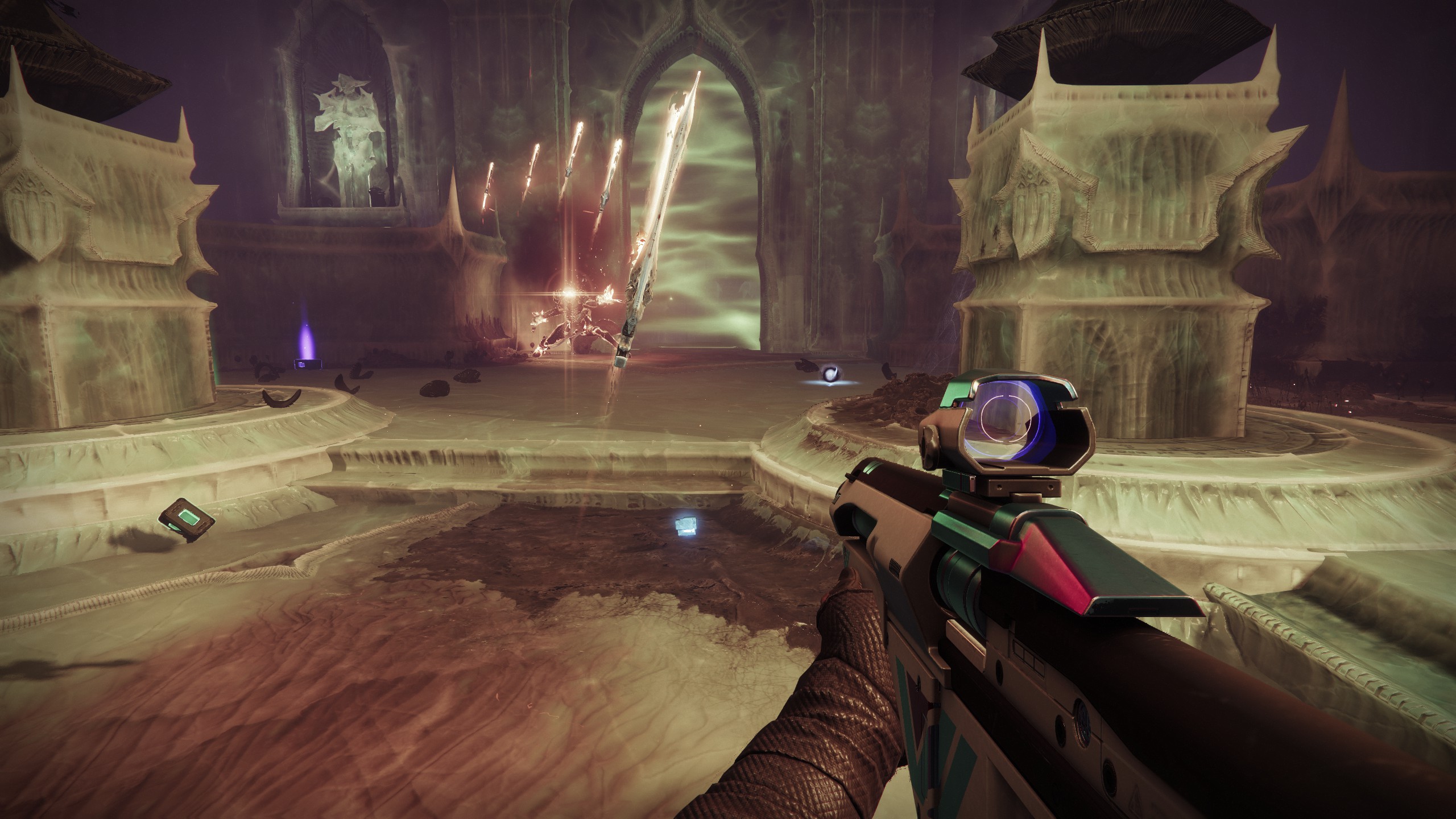
Gambit did get some rules tweaks this year, as well as a seasonal refresh of enemy placements. On paper the changes make sense, although there's some tuning still needed and, more broadly, it would benefit from new maps. It's also not ideal that every problem it presents can be solved by having Gjallarhorn equipped. Some experimental rulesets are planned over the next year—much like last year's Trials Lab tests. Hopefully Bungie will land on something that can't be overcome by a single overpowered rocket launcher.
As Destiny 2 enters this new era of consistent improvements, Bungie is regularly making things that are worth preserving.
As for Crucible, I'd complain about the lack of any Throne World maps, but we never got any Europa ones either. Sure, every big sandbox update does shift the Crucible meta, and generally I'm a fan of Bungie's stated aim of disincentivizing abilities in favour of actual gunplay. The weapon meta is in a relatively good place right now, but Destiny 2's current maps still heavily favour shorter range options. Shotguns and SMGs will continue to be strong until we get new arenas specifically designed for the current version of the game.
Really, though, if I have one overarching concern about the overall state of Destiny 2, it's that Bungie is still deleting chunks of it. The 'Destiny Content Vault' is Bungie's term for the removal of older, lesser played parts of the game. This year's sacrifices are less dramatic than Beyond Light's, but still notable. Not only do we lose the Forsaken expansion's campaign and the Tangled Shore destination, we also lost most of last year's seasonal content.
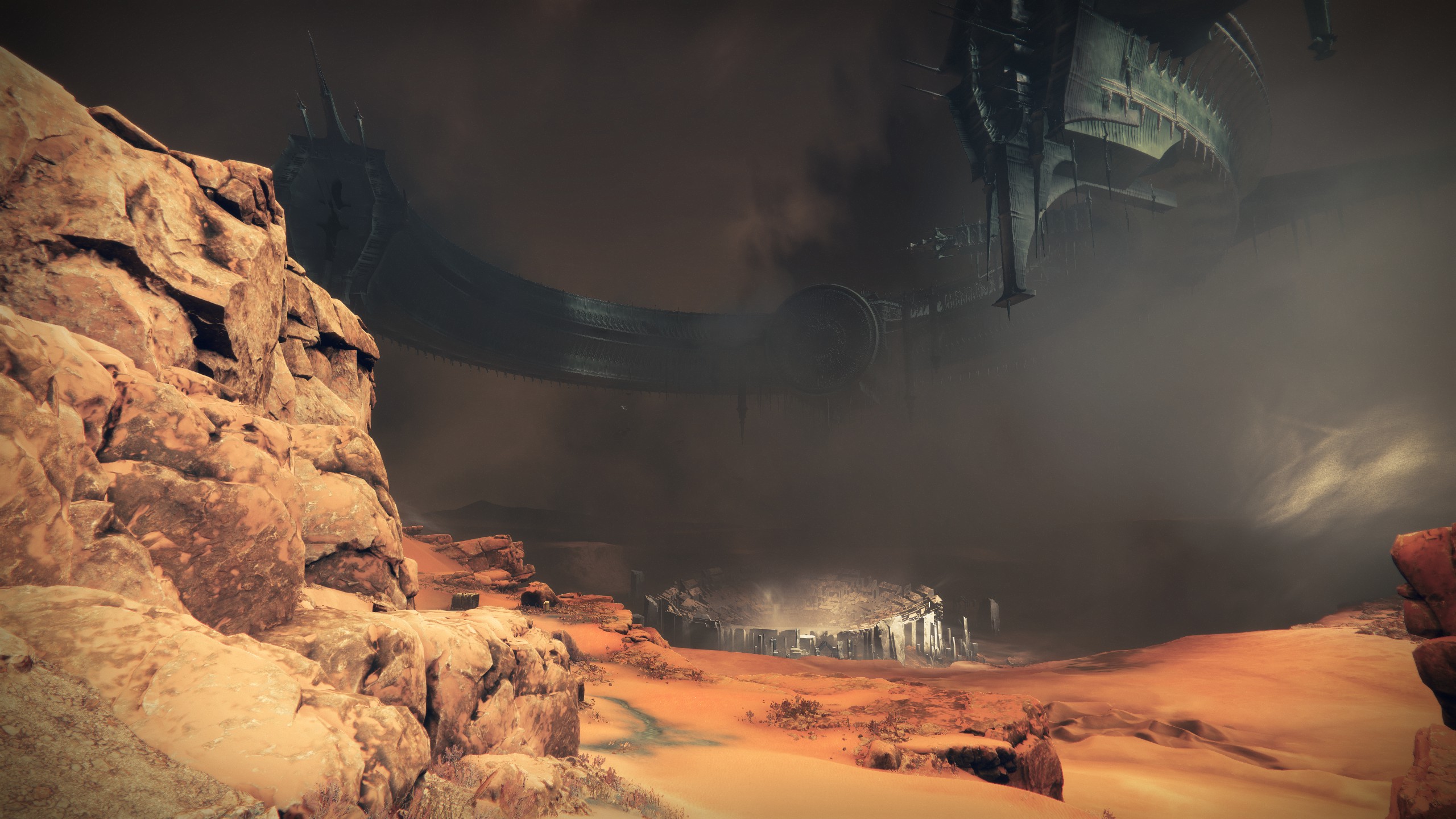
Forsaken's campaign was good, and it's removal is a shame, but The Witch Queen's is markedly better. Will it too disappear one day? I hope not. As Destiny 2 enters this new era of consistent improvements, Bungie is regularly making things that are worth preserving. Take last year's standout Exotic mission, Presage, which was like nothing else in the game. Now it's gone, despite tying directly into the story of this season's Exotic quest Vox Obscura.
In the last mission of The Witch Queen's campaign, as I embarked on the final assault of Savathûn's stronghold, the soundtrack made itself known—triumphant, driving, and dense with interwoven motifs that evoke the series' history. The irony of the Content Vault is that Destiny 2 loves to reference its past. And here, in the final moments of an incredible campaign that channels some of the best shooters of the last five years, it earns the right to do so. It's not just an indulgence; it's a victory lap. It would be a shame if that, too, was one day lost.
There's still work to be done on the game at large, but The Witch Queen is a massive step in the right direction. The campaign alone is worth the price of admission.

Phil has been writing for PC Gamer for nearly a decade, starting out as a freelance writer covering everything from free games to MMOs. He eventually joined full-time as a news writer, before moving to the magazine to review immersive sims, RPGs and Hitman games. Now he leads PC Gamer's UK team, but still sometimes finds the time to write about his ongoing obsessions with Destiny 2, GTA Online and Apex Legends. When he's not levelling up battle passes, he's checking out the latest tactics game or dipping back into Guild Wars 2. He's largely responsible for the whole Tub Geralt thing, but still isn't sorry.


